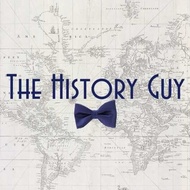
The History Guy Guild
History deserves to be remembered.
Join The History Guy from YouTube in conversation about his videos and various topics in history. Here you can find behind-the-scenes peeks of the set and The History Cats. Share ideas for future videos or ask questions of both the community and The History Guy himself. Early releases and the occasional extras are available for supporting members.
Join The History Guy from YouTube in conversation about his videos and various topics in history. Here you can find behind-the-scenes peeks of the set and The History Cats. Share ideas for future videos or ask questions of both the community and The History Guy himself. Early releases and the occasional extras are available for supporting members.
Interested? Want to learn more about the community?
The Illuminating History of the Jack-o-Lantern
It is October, and millions of American children will be participating in an annual tradition, traveling to a local pumpkin patch to choose the orange orb that they and their parents will carve into a Jack-o-Lantern. But where did the entire idea arise? And how long has it been going on?
Interested? Want to learn more about the community?
What else you may like…
Videos
Posts
Rio Salado: The Last Attempt at a Muslim Spain
The Reconquista, or Christian reconquest of Iberia, took nearly 800 years. The fighting did not come without great attempts by Muslim powers across the strait trying to reestablish their presence in mainland Europe. The last gasp of that effort came in the 1330s, when the powerful Marinid sultanate of what is modern Morocco invaded in an attempt to reverse Christian gains and secure the perilous position of the Sultanate of Granada.












